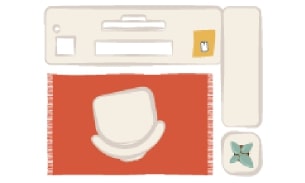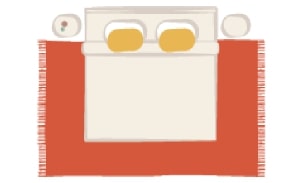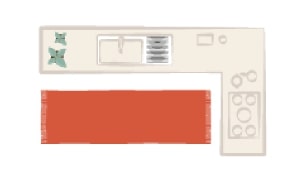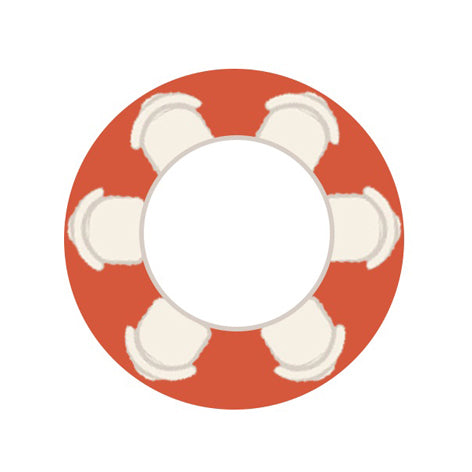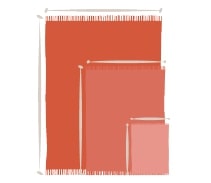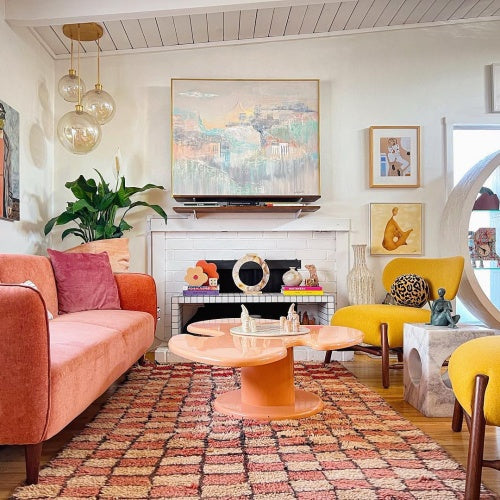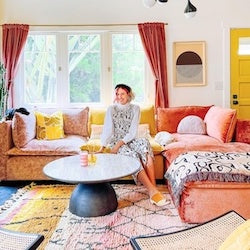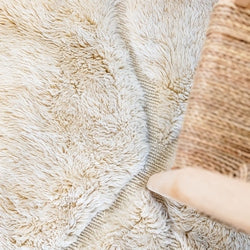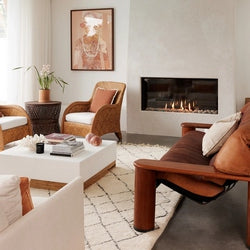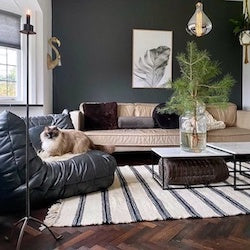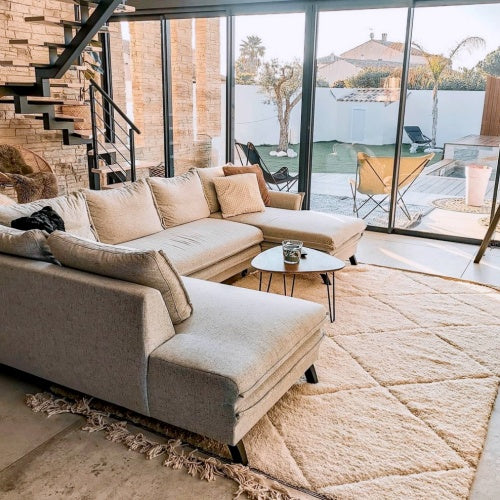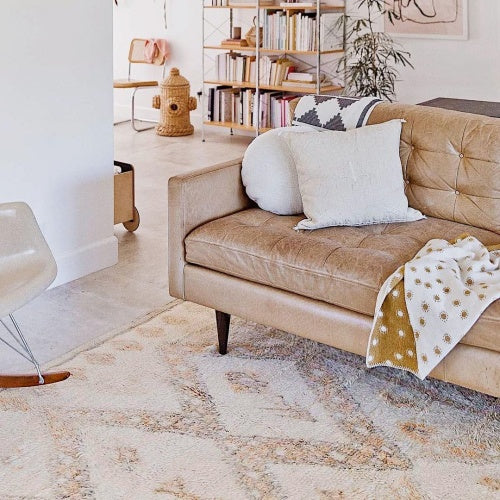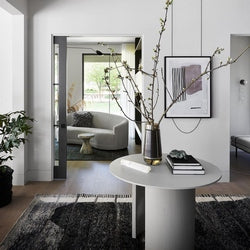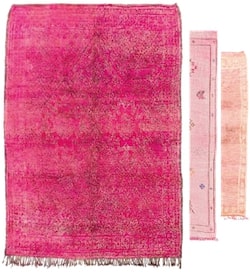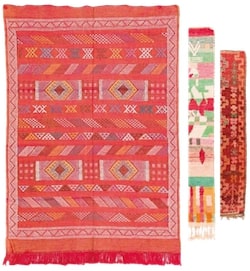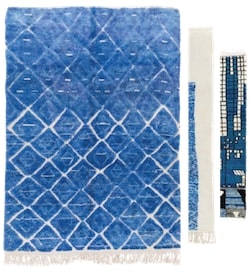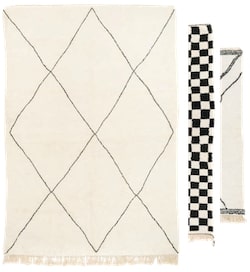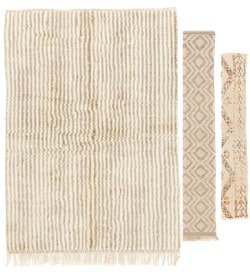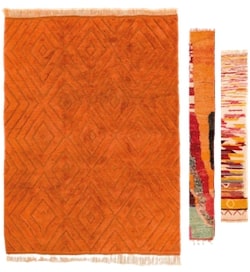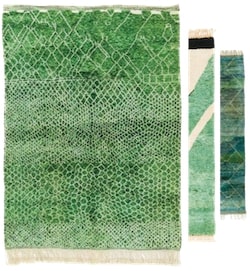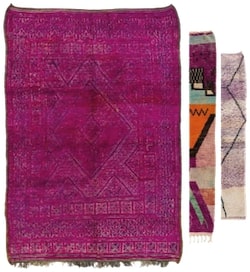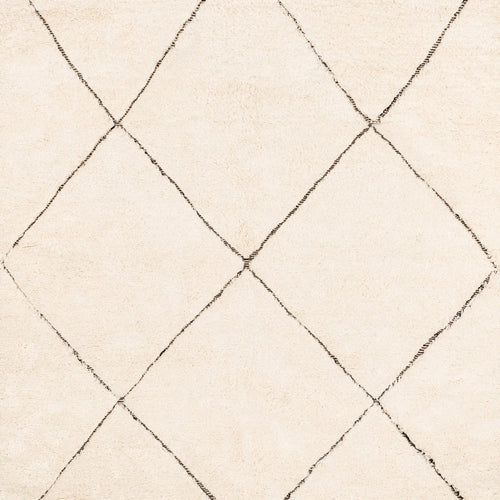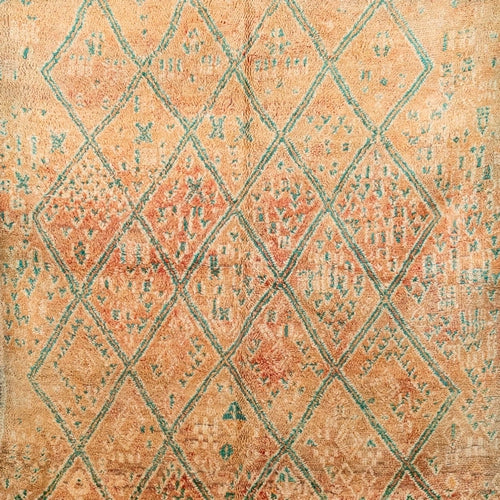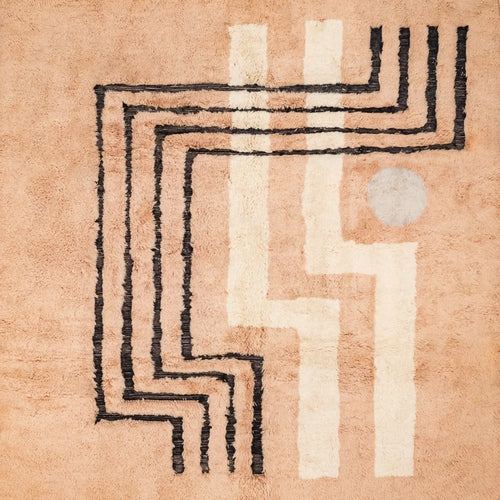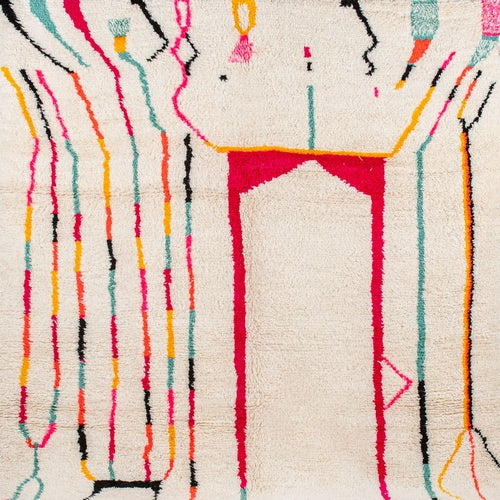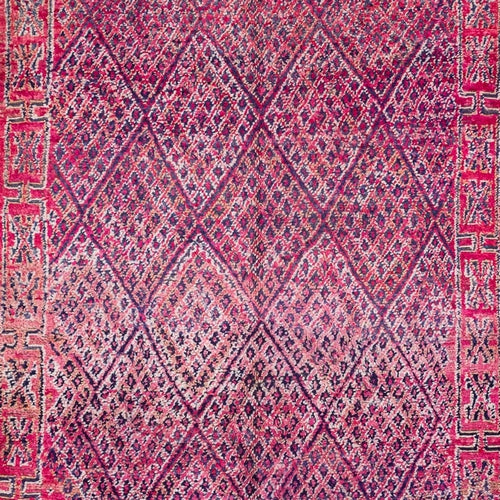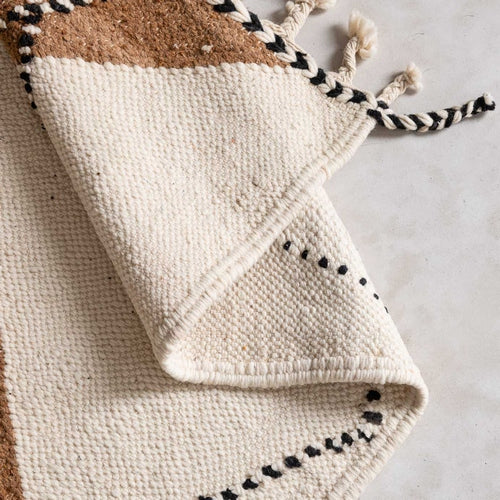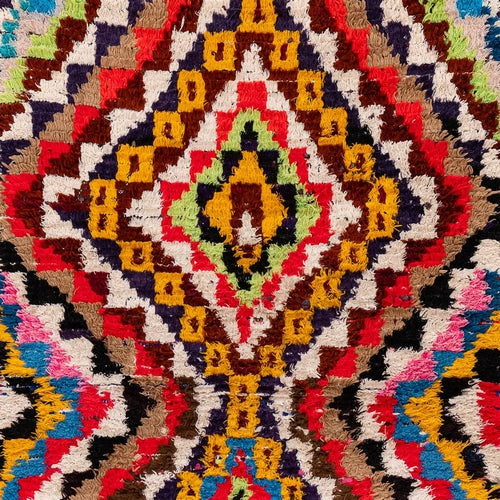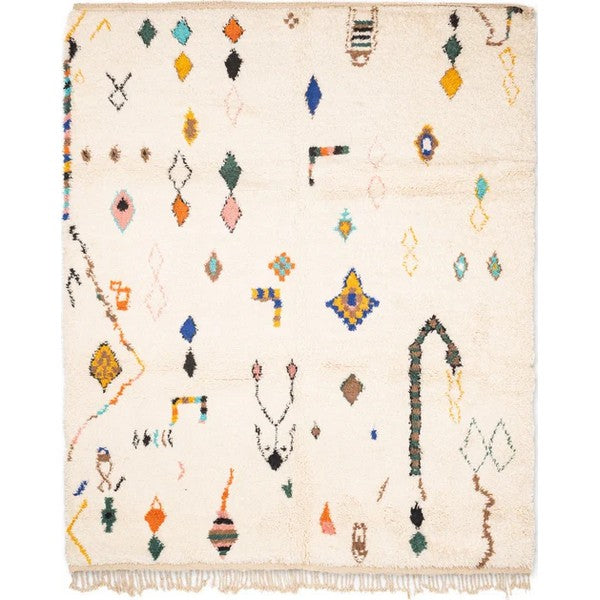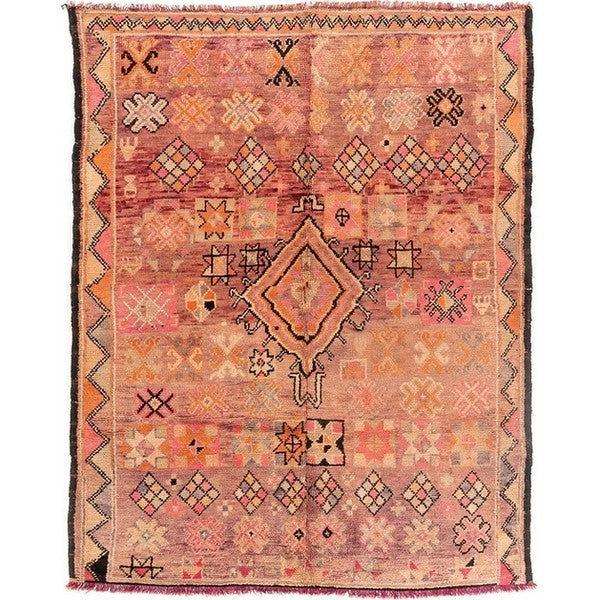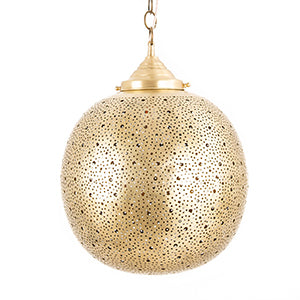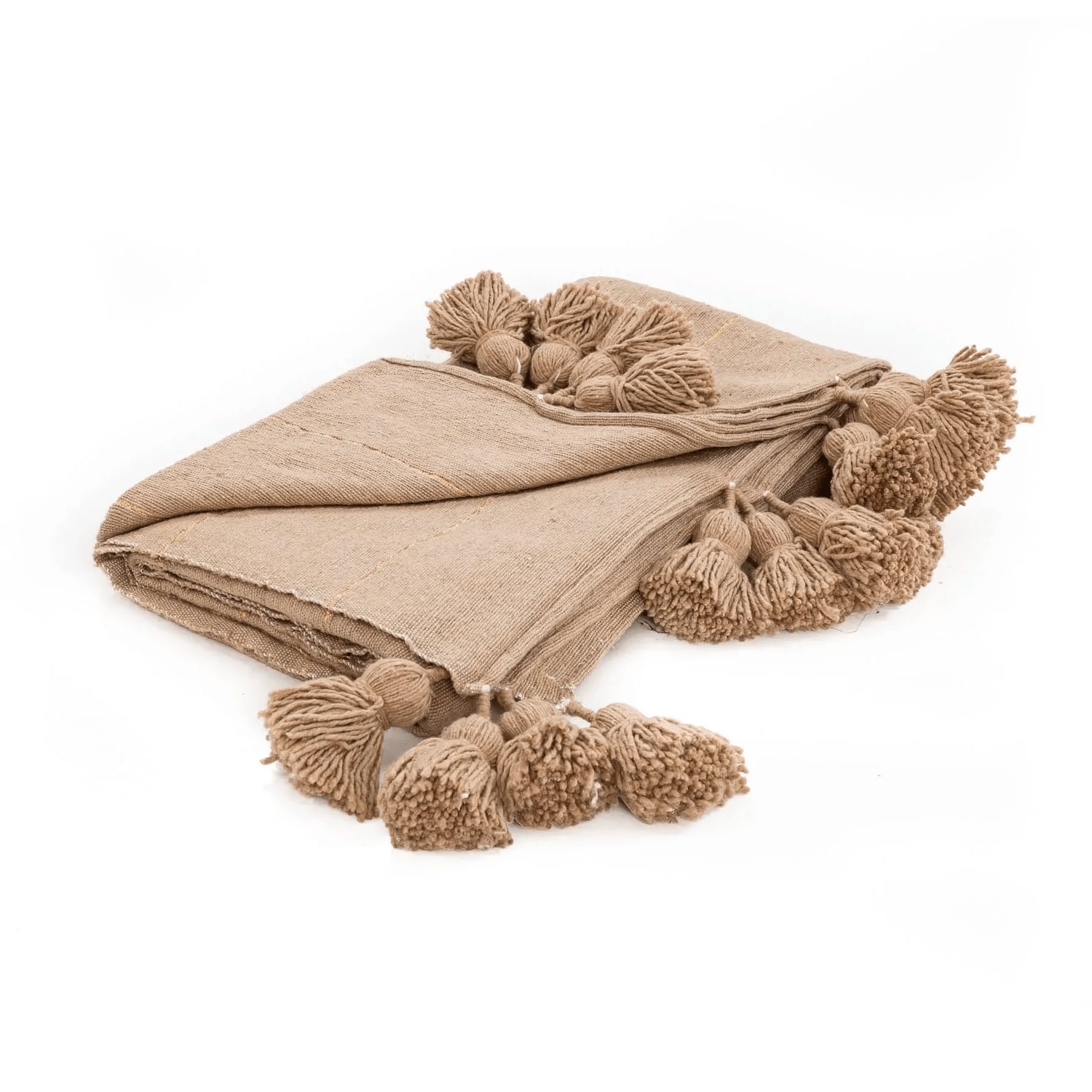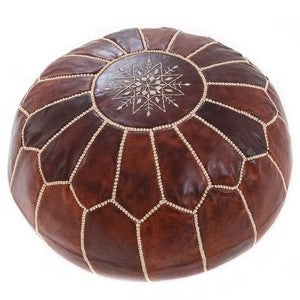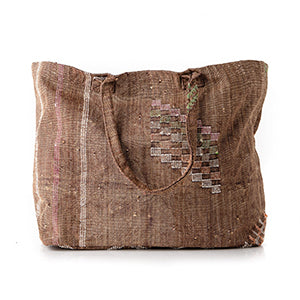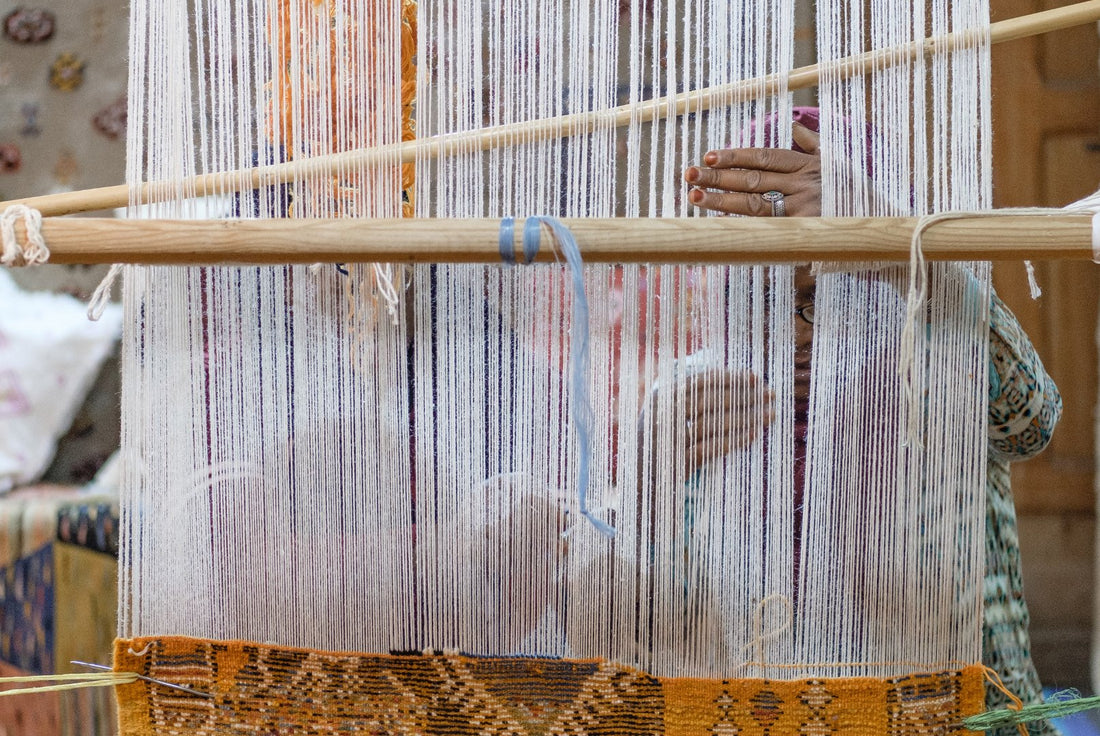The Nomadic Berber tribes of the Atlas mountains and the Saharan desert have to be resourceful to survive in their unforgiving climates. Boujad Rugs typify this need – a versatile and stylish covering which can fulfill many uses. In the same way nomadic life is defined by the seasons, the use of traditional Boujad Rugs also follows a seasonal cycles.
In Winter, the rug usually fulfills the most obvious use – it provides warmth and softness to an otherwise cold and hard floor, and can also be used as an additional blanket on those particularly cold nights, giving extra warmth just when it’s needed. In the Mountains the Berbers might live in caves, huts or anywhere that provides shelter as they move with their herds to find food. If they shelter in an open cave, a rug will be hung at the door to keep the wind out.

Come Spring, the weather begins to soften, the sun gives brightness and warmth to the air and the lambing season begins. Around the world this is a time for renewal and regeneration, and the Berber tribes will be able to replenish some of their herds taken by the harsh winter during the lambing season and make preparations for the next winter. Traditionally, they will also will clean their rugs at this time
You can find out how to clean your Moroccan Rug here

The preparation of spring passes – the lambs are born, and the sheep are shorn and the wool is spun and prepared for weaving into garments and rugs. In the more fertile regions, particularly around the Beni-M’guild tribes, the few fertile pastures that exist that been sown with seeds and attention turns to the annual festivities. The Moussem festival in Boujad allows Berbers to showcase their most skilful rugmakers with the decorative adornments to horses.

Summer is a season of plenty, when the weather is kind and nature provides in abundance. Some people choose to rest and relax in this time, and the Boujad Rug can also be used with a hammock. The vibrant colours of the Boujad Rug adds life and charm to the area, radiating the glow of summer to all around.

The tribes have a small window where they don’t need to think about preparing for winter and they can live in abundance. The rugs of the camp become temporary wall partitions to provide privacy to guests they are hosting, and also serve as public displays of artwork and handicraft.

As Autumn comes, the last of the fair weather is celebrated with the Imilchil Wedding Festival, a timely reminder of the importance of building the family unit in Berber society, and also a chance to put to use all the handicraft from the summer.

The glow of summer and good times fade and the harshness and bareness of winter starts to appear. Nature recoils back into the earth and the Berbers must make their final preparations for winter. During this time they will tend to migrate to lower plains that are not so cold and where some vegetation remains for their herds to graze, and will pass through the main trading posts, like Boujad, Azilal or Mrirt, where they will trade any surplus rugs or animals for winter supplies.

The shepherds will now take their rugs with them to wear - giving them warmth while they tend to their herds. In the camps, the rugs again will be providing a soft, warm cushion to the floor and an additional blanket for the cold nights - as well as shield from the howling wind for those shelters without door. During this time the herd will shrink as the weaker animals don’t survive or some are eaten. Before their very eyes, the Berber tribes see their wealth diminish and they can only wait for winter to pass to allow the regeneration and renewal of spring to commence once more.
At Benisouk, we understand the culture of the nomadic Berber tribes who craft Boujad Rugs, and we have dedicated a lot of our effort to building lasting relationships with them. When you buy a rug from us, you are helping provide the means for Berber tribes to last through the winter and enjoy their summers, and preserve this wonderful way of life.
